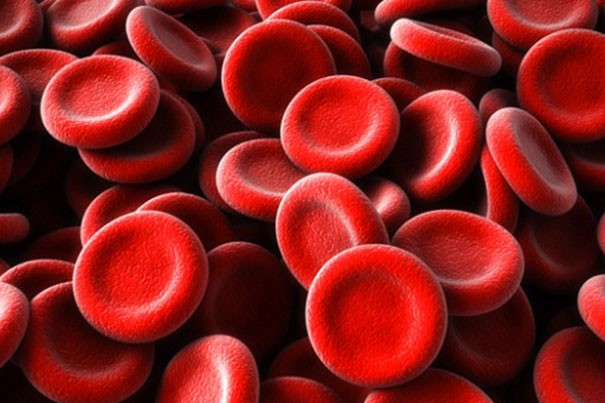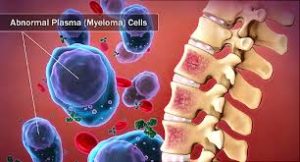
Recently Diagnosed or Relapsed? Stop Looking For a Miracle Cure, and Use Evidence-Based Therapies To Enhance Your Treatment and Prolong Your Remission
Multiple Myeloma an incurable disease, but I have spent the last 25 years in remission using a blend of conventional oncology and evidence-based nutrition, supplementation, and lifestyle therapies from peer-reviewed studies that your oncologist probably hasn't told you about.
Click the orange button to the right to learn more about what you can start doing today.
- You are here:
- Home »
- Blog »
- non-conventional therapies »
- Multiple Myeloma Symptoms- Sex after Kyphoplasty???
Multiple Myeloma Symptoms- Sex after Kyphoplasty???

“The incidence of recurrent fracture after kyphoplasty (for MM spine involvment) is substantial at 10% within the first 90 days.
Hi Cancer Coach- My 37 year old daughter was diagnosed with Multiple Myeloma (MM) 3 weeks ago. One of her concerns is about having sex with her husband. They just did kyphoplasty on her T10 and she has a lesion on her femur. Weakened pelvic bone
She has begun chemotherapy and has started kidney dialysis every other day due to acute renal failure.
What do you recommend? Walter
Hi Walter-
I am sorry to learn of your daughter’s MM diagnosis. However her youth will help her manage her cancer. I was 34 when I was first diagnosed with MM so I know that it helps to be a young MM patient.
No one has ever asked me about sex after kyphoplasty. The link below takes you to a study about bone fractures after the kyphoplasty procedure.
Three things for your daughter and her husband to consider:
- According to the study below, there is a risk of fracture after the procedure-
- However this risk is reduced after the survivors back heals for more than 90 days-
- These evidence-based, non-toxic bone health therapies have been shown to enhance bone health-
On the one hand, my guess is that all of the kyphoplasty patients in the study below were about the average age of a MM patient. The average patient is 67 years old. On the other hand, my guess is that your daughter is in it for the long haul, meaning she should wait for another month or so, do some physical therapy, and eat plenty of bone strengthening foods and supplements.
Please have your daughter and her husband watch the free webinar about the MM Cancer Coaching Program. While conventional oncology has approved a long and growing list of chemotherapy regimens, all MMer relapse eventually. I have learned that MMers must think outside the conventional oncology box.
Let me know if you have any questions.
Thanks,
David Emerson
- MM Survivor
- MM Cancer Coach
- Director PeopleBeatingCancer
Recommended Reading:
- A Long-term Multiple Myeloma Survivor’s Diet, Nutrition Plan-
- Probiotics, Bone Health, Multiple Myeloma
- Evidence-based Medicine and the Multiple Myeloma Patient
Recurrent fracture after vertebral kyphoplasty.
“Confounding factors of age at procedure, sex, and chronic steroid use were also considered and found to have no statistically significant difference between those with fracture recurrence and those without fracture recurrence.
Eleven kyphoplasty procedures resulted in a recurrent fracture after kyphoplasty within the first 90 days. After the first 90 days, five recurrent fractures occurred…
Patients who sustained a recurrent fracture tended to have a higher number of vertebral levels treated. There was no statistically significant difference between the survival time of kyphoplasty procedures that resulted in recurrent adjacent versus distant vertebral body fracture…
The incidence of recurrent fracture after kyphoplasty is substantial at 10% within the first 90 days. It is difficult to determine if this fracture rate is the result of surgical intervention or the natural history of the patient’s osteoporosis.”
Early Adjacent Vertebral Fractures after Balloon Kyphoplasty for Osteoporotic Vertebral Compression Fractures
“In the literature, the incidence of adjacent vertebral fracture after balloon KP ranges from 6.5% to 25% [12,14–17]. Fribourg et al. [16] treated 38 patients at 47 levels with balloon KP; of these, 10 patients experienced 17 subsequent fractures. Harrop et al. [17] treated 225 vertebrae in 115 patients with balloon KP; 34 subsequent fractures developed in 26 patients within an average follow-up period of 1 month. In our study, the incidence of adjacent vertebral fracture after KP was 16.2%, similar to that reported by earlier studies…
Conclusions
Balloon KP is a minimally invasive procedure for stabilizing vertebral compression fractures and is effective in pain reduction. However, early adjacent vertebral fractures were present in 16% of the patients within 3 months after surgery. The most important risk factor for fractures was cement leakage into the disk. Thus, careful attention should be paid to determine whether cement leakage occurs during KP.”


